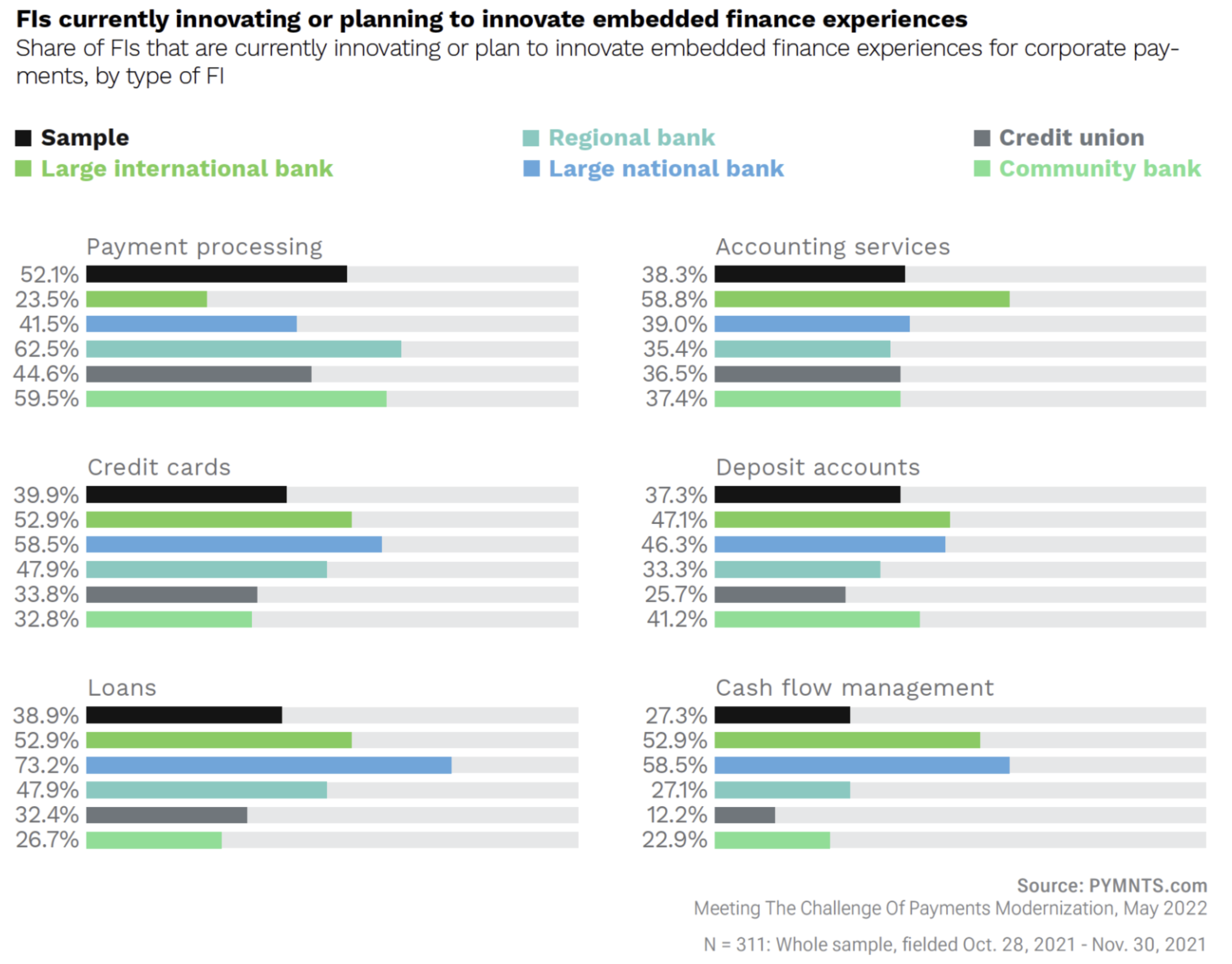PYMNTS Intelligence: Digital Tools vs. In-Branch Banking for SMBs
It's an open secret that the types of products and services corporate clients demand from their financial institutions (FIs) are shifting to digital banking solutions.
This month PYMNTS Intelligence takes a look at recent changes in corporate clients’ requirements for online versus in-branch banking as well as how banks can use embedded and open banking to meet these expectations.

In-Branch Banking vs. Online
Because SMBs now have a strong preference for digital solutions, the desire for in-branch banking has dropped.
A report from EY, for example, found that 68% of SMBs are seeking to manage as many aspects of their businesses through digital touch points as possible, and of 12 factors that SMBs consider when selecting a financial services provider, having a physical presence in the form of an office or branch ranked last in importance.
A survey from Citizens Financial Group found that 86% of businesses now use digital banking channels, compounding evidence that digital usage has become widespread for SMBs.

The Bank of America report noted that small business digital sales are now up 300% compared to pre-2020 levels and account for nearly half of total sales. A survey from Citizens similarly found that 86% of businesses now use digital banking channels, offering further evidence of how widespread digital usage has become for SMBs.
However, the Citizens survey also noted that two-thirds of consumers and businesses reported they prefer to ask a real person for financial advice.
The in-branch experience offers SMBs a perfect venue for this type of human interaction, though consumers are also increasingly open to videoconferencing options, with 86% of Citizens’ survey respondents expressing that they were comfortable using videoconferencing technology to interact with their banking partners. The willingness to participate in videoconferencing explains why in-branch visits have dropped despite a desire for a human touch.
The Importance of Platform Modernization
In addition to the data from the Citizen survey, one recent report notes that 77% of small businesses with more than 50 employees would not do business with an FI that does not offer online account openings, whether or not this reflected the SMB owner’s particular preference. All this data shows the importance of banking supporting digital tools...but you cannot forget to optimize the current payment channels.
As we noted in a previous blog, checks are NOT going away; according to a December 2021 Federal Reserve report on non-cash payment methods, checks accounted for nearly 23% of the total value of payments in 2020. That means that banks need to not only incorporate digital tools for banking, but continue to invest in technologies like AI and machine learning that automate check processing.
In the new customer-first world, where a seamless experience across all platforms is key to retention and growing your customer base, banks need to continue to invest in all the payment channels that customers demand.
